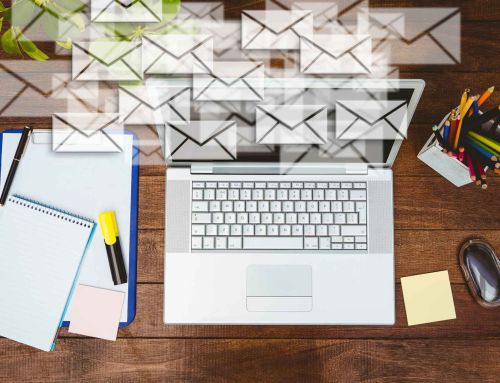Would you introduce yourself to a client without bathing, combing, or with shoes in two different colors? The way you write your email is part of your extended image, just like your social networks, your car, your office, or the background of your Zoom meeting. They say a lot about you and make a favorable or unfavorable impression that can result in different attitudes and results.
Take the number 236 and then add nine zeros. It’s a gigantic number: 236,000’000,000. Two hundred thirty-six billion emails are sent every day around the world. The vast majority of these are business emails.
But not all emails are the same. Some are better than others – they are well written and serve their purpose effectively and elegantly.
How many emails do you write per day? How many do you get? Do you want to take your emails to the next level?
1. The “issue” matters
In most emails, we develop the content and only think about the “subject” or title of the email until the end. The amount of emails with definitely boring, generic, or useless subjects is impressive.
The subject is the first thing the person receiving the email sees: it is in their inbox and helps them decide whether to read that email at the moment, leave it for later, or, outright, send it to the trash can.
Avoid generic titles like “hello” or “I hope this interests you.” Whether it’s for clients or partners, I prefer a title that talks about content without being highly technical. Do not write either: “Subject: P 44518 11/21/2020”
Instead, write: “Subject: South grid budget, November 21, 2020”, or “Work plan, Madrid trip,” or “Promotions for printing, July 2021.”
Think short, clear, informative, and engaging. Please don’t leave it to chance!
Related: How to Write an Email Subject Line That’s Sure To Get Clicked
2. Greeting and farewell
E-mail is done digitally, but it is still, at its core, a message between two people, two human beings who like to be treated as such. The least we expect – and rightly so! – is a friendly and personalized greeting and farewell.
Avoid generic greetings, which “feel” forced or said in a hurry, whenever you can address the recipient by their first name, saving, if applicable, the protocols and titles: doctor, teacher, professor, etc.
Like the entrance, the farewell should set the human and cordial tone without abusing clichés and clichés. You can add some personal detail (“Say hello to Marcia, your wife,” or “I hope you are getting comfortable in Monterrey”) that generates a greater connection and greater trust.
Today’s networks are created and reinforced with each message. Take advantage of each email to connect with people, not just convey information or get out of trouble.
3. Get to the point!
That said, emails are not made to convey huge amounts of information. Nobody wants to read an entire novel in their inbox or on their cell phone between meetings!
Keep the content short and to the point, using dots or numbers to sort the ideas if necessary. An email should be no more than two or three paragraphs long. Five? Okay, but no more than that.
If there is more to include in the same shipment, I recommend keeping the content of the text short and adding a document with the complete information: it is easier to print, read and share. Everyone hates excessively long emails, especially if they are part of a longer chain.
Never (but never) try to resolve a problem, discussion, or complex issue through emails. The written word can never encapsulate the details of a live conversation or, even more, a meeting. In the middle of an argument, written words are easily misunderstood, and in a complex project, the same will happen. Better pick up the phone, fix the problem, and finally send a short email with the agreements reached.

Everyone hates excessively long emails / Image: Stephen Phillips – Hostreviews.co.uk via Unsplash
Remember: written communication is a mechanical substitute for a real conversation, between two real people, with their real characteristics and circumstances. That is why there is no single correct shade, no single style. You would not talk the same with your boss as with a client, friend, or colleague.
Are you talking about “you” or “you”? Do you greet him formally or with familiarity? Are you overly serious or too casual? Try to imagine that you are in the same room, how would you do it then? Try to imagine what information he would need and find the best way to say it. And of course: say it well.
Bad spelling is bad business breath. No one will tell you, but trust me: everyone notices.
By the way: an email is not an SMS. An email does not admit misspellings or simplified language (at least, not in a business environment). Take care of your spelling and syntax: write correctly and completely and save the emojis and contractions for another time. Completely avoid WRITING WITH CAPITAL LETTERS and do not abuse the exclamation marks !!!!!!!!!!
5. Always reread your email
Oh, how much trouble we could avoid if people reread what they just wrote! Not only to correct the spelling or complete what is missing but above all to understand if the message makes sense, that is, if it is clear and concise in all its points.
In important emails, I recommend that you read the email aloud to “prune” the text and eliminate the too confusing, long, or unnecessary parts. Sometimes, for the sake of looking “formal,” we overcomplicate things that may be simple.
Related: 6 Reasons Why Building an Email List is so Important
Nine times out of ten, a new read before sending will help you find areas for improvement and (sure!) Embarrassing mistakes that would look terrible on your customer’s tray.
By last…
6. Don’t forget to attach the files!
It’s a bit … amateur.

Article by Francisco García Pimentel






























Leave A Comment
You must be logged in to post a comment.